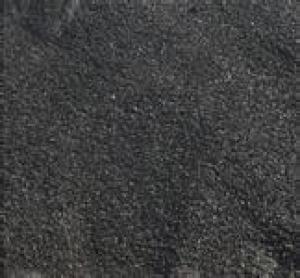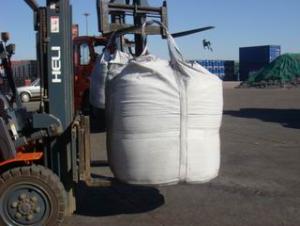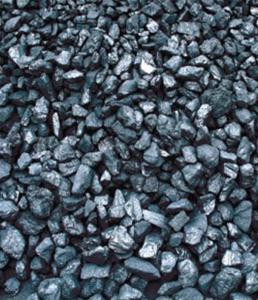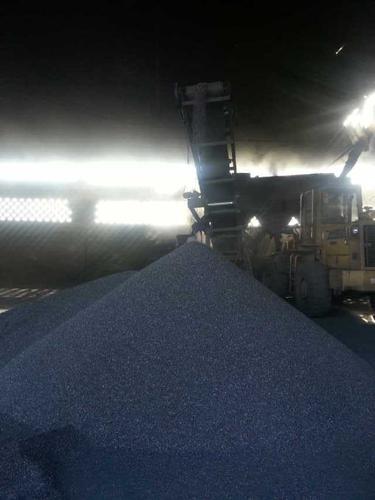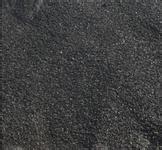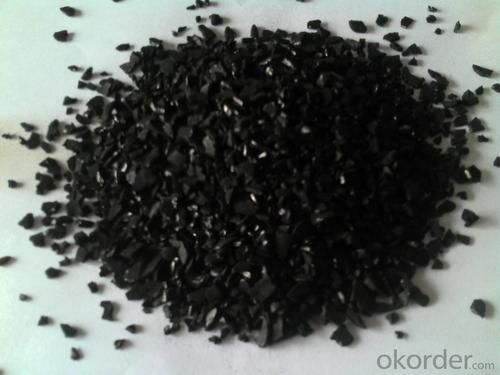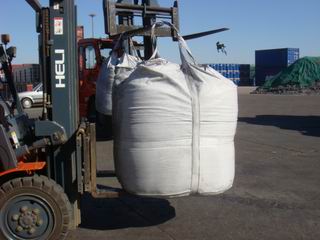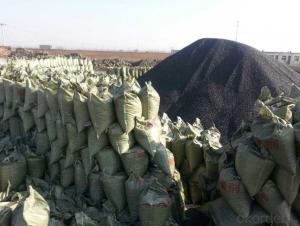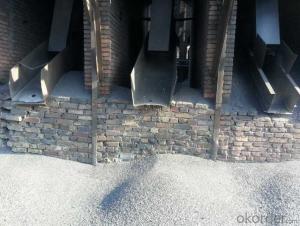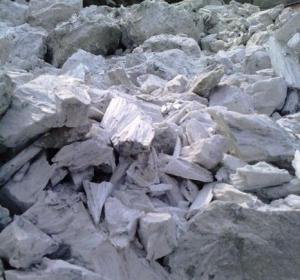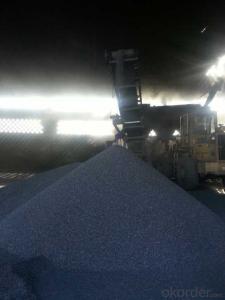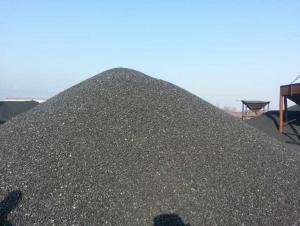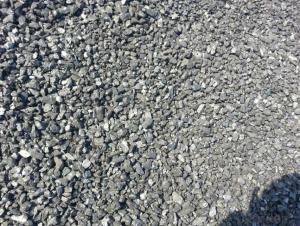Carbon Additive FC94 With High Quality And Good Delivery Time
- Loading Port:
- China main port
- Payment Terms:
- TT or LC
- Min Order Qty:
- 0 m.t.
- Supply Capability:
- 2000 m.t./month
OKorder Service Pledge
OKorder Financial Service
You Might Also Like
Product Description
It used the high quality Taixi anthracite as raw materials through high temperature calcined at over1200 by the DC calciner with results in eliminating the moisture and volatile matter from anthracite efficiently, improving the density and the electric conductivity and strengthening the mechanical strength and anti-oxidation. It has good characteristics with low ash, low sulphur, high carbon and high density. It is the best material for high quality carbon products.
Application:
Carbon Additive/Calcined Anthracite Coal may substitute massively refinery coke or graphite. Meanwhile its cost is much less than the refinery coke and graphite. Carbon Additive is mainly used in electric steel ovens, water filtering, rust removal in shipbuilding and production of carbon material.
General Specification
PARAMETER UNIT GUARANTEE VALUE | |||||
F.C.% | 95MIN | 94MIN | 93MIN | 92MIN | 90MIN |
ASH % | 4MAX | 5MAX | 6MAX | 7MAX | 8MAX |
V.M.% | 1 MAX | 1MAX | 1.5MAX | 1.5MAX | 1.5MAX |
SULFUR % | 0.5MAX | 0.5MAX | 0.5MAX | 0.5MAX | 0.5MAX |
MOISTURE % | 0.5MAX | 0.5MAX | 0.5MAX | 0.5MAX | 0.5MAX |
Size can be adjusted based on buyer's request.
Package: In jumbo bag or as buyer's request
Pictures

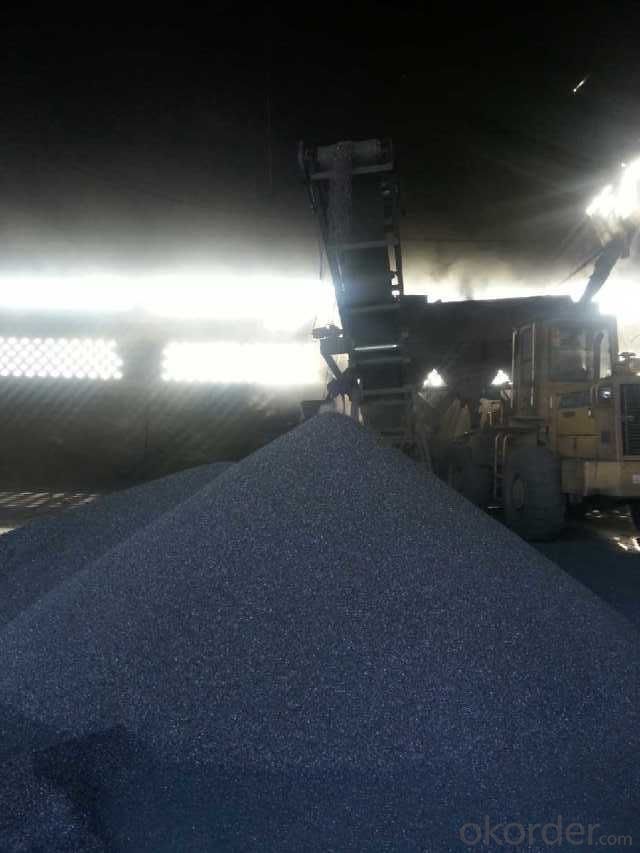
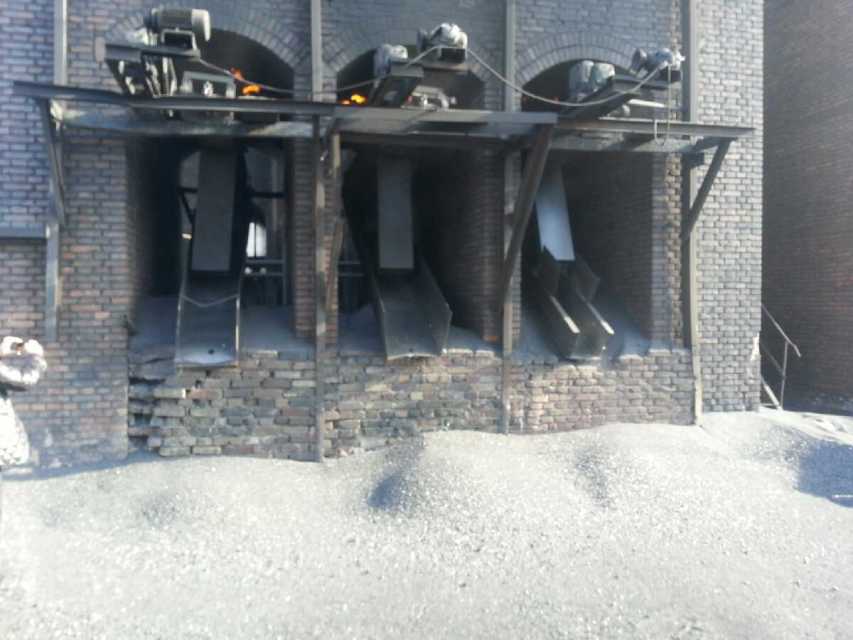
- Q: What is carbon offsetting in aviation?
- The aviation industry utilizes carbon offsetting as a mechanism to counterbalance the carbon emissions it generates. Since airplanes contribute significantly to greenhouse gas emissions, carbon offsetting offers a means for airlines and passengers to acknowledge their carbon footprint and contribute to the battle against climate change. The carbon offsetting process involves calculating the quantity of carbon dioxide and other greenhouse gases released during a flight, and subsequently investing in projects that decrease an equal amount of emissions elsewhere. These projects may encompass initiatives involving renewable energy, forest preservation, or methane capture. The objective is for the emissions reduced or eliminated by these projects to compensate for the emissions produced by the aviation industry. To partake in carbon offsetting, airlines or passengers can acquire carbon offsets, which essentially represent credits equivalent to the reduction or elimination of one metric ton of carbon dioxide or its equivalent. These offsets are generated by certified projects that adhere to stringent standards and undergo independent verification. By investing in carbon offsets, the aviation industry can contribute to global endeavors aimed at reducing greenhouse gas emissions and mitigating the impact of air travel on climate change. It enables airlines and passengers to promptly take action to counteract the environmental repercussions of flying, as the reduction or elimination of emissions from offset projects helps to balance out the emissions generated by air travel. It is crucial to note that carbon offsetting in aviation should not serve as a means to justify or neglect the necessity of long-term solutions to reduce emissions from aircraft. Instead, it should be regarded as a supplementary measure to other strategies, such as investing in more fuel-efficient aircraft, utilizing sustainable aviation fuels, and implementing operational improvements. Nonetheless, carbon offsetting does provide a valuable tool to mitigate emissions in the short term, while the aviation industry endeavors to adopt more sustainable practices.
- Q: What should be done to deal with leakage of carbon monoxide from the plant?
- The hazardous and dangerous characteristics of carbon monoxide, carbon monoxide, is the Chinese name of CO. It is the product of incomplete combustion of materials. It is slightly soluble in water and soluble in various organic solvents such as ethanol and benzene. Mainly used in industrial chemical synthesis, such as synthetic methanol, phosgene, etc., or refined metal reducer. Occupation exposure to carbon monoxide in manufacturing steel and iron, coke, ammonia, methanol, graphite electrode, printing and dyeing factory, singeing, internal combustion engine powered coal mining blasting; non occupation contact is more extensive, such as household water heater was boiling water, winter coal, gas heating and so on, will produce carbon monoxide. Carbon monoxide is a flammable toxic gas known, but because of its physical and chemical properties of colorless smelly, so it is not easy to be aware of the harm, so it is not only the occupation killer, or the people's daily living potential. Carbon monoxide mixed with air can form an explosive mixture. When exposed to fire, high heat can cause combustion and explosion. Bottled carbon monoxide in case of high fever, increased pressure within the container, cracking and explosion. Because carbon monoxide has flammable properties, strong oxidizing agents and alkalis are its inhibitions. If the fire, should immediately cut off the gas source; if not immediately cut off the gas source, is not allowed to extinguish the burning gas.
- Q: What does carbon nanotubes (5,5) in (5,5) mean?
- 3. get (5,5) after the initial point (0,0) to draw a line, this line is the circumference of the carbon nanotubes.
- Q: What is carbon offsetting in the energy sector?
- The energy sector engages in carbon offsetting by compensating for the greenhouse gas emissions generated from energy generation and consumption activities. This practice involves investing in projects that reduce or eliminate carbon dioxide (CO2) and other greenhouse gas emissions from the atmosphere. The main objective is to achieve a balance between the emissions released and the emissions reduced. Greenhouse gas emissions from the energy sector, particularly from the burning of fossil fuels like coal, oil, and natural gas, contribute significantly to global emissions. Carbon offsetting in this sector aims to mitigate the environmental impact of these emissions by financing projects that promote renewable energy, energy efficiency, and other measures to reduce carbon. There are various types of projects that can be supported through carbon offsetting in the energy sector. For instance, investments can be made in renewable energy projects such as wind farms, solar power plants, or hydropower facilities. These projects generate clean energy without emitting greenhouse gases and help replace fossil fuel-based energy sources, thus reducing overall emissions. Moreover, carbon offsetting can also support energy efficiency projects. These initiatives focus on reducing energy consumption by implementing energy-efficient technologies, improving insulation, or optimizing industrial processes. By reducing energy demand, these projects indirectly contribute to lower greenhouse gas emissions. Additionally, carbon offsetting in the energy sector can involve supporting initiatives that remove carbon dioxide from the atmosphere. These projects often include reforestation or afforestation efforts, which involve planting trees or restoring degraded forests. Trees absorb and store carbon dioxide through photosynthesis, thus offsetting emissions and combating climate change. In summary, carbon offsetting in the energy sector is crucial for transitioning towards a sustainable and low-carbon future. By investing in projects that reduce or eliminate greenhouse gas emissions, individuals, organizations, and governments can take responsibility for their carbon footprint and contribute to global efforts in addressing climate change.
- Q: How does carbon affect the migration patterns of birds?
- Carbon emissions and the resultant climate change have a significant impact on the migration patterns of birds. The increase in carbon dioxide levels in the atmosphere leads to global warming, which affects various environmental factors such as temperature, precipitation, and vegetation growth. These changes directly influence the availability of food, water, and suitable habitats for birds during their migratory journeys. One of the key ways carbon affects bird migration is by altering the timing and duration of seasonal events. For instance, warmer temperatures can cause plants to bloom earlier or delay their growth, disrupting the synchronized timing of flowering and the arrival of insects. This can have serious consequences for birds that rely on these resources for food during their migration. If birds arrive at their breeding grounds or stopover sites and find a lack of food, it can lead to decreased survival rates, reduced reproductive success, and overall population decline. Additionally, changes in precipitation patterns due to carbon emissions can affect the availability of water sources along migration routes. Birds rely on these water bodies for drinking and bathing, especially during long flights. If these water sources dry up or become scarce, it can force birds to alter their flight paths, search for alternative water sources, or even risk dehydration. Furthermore, carbon-induced changes in vegetation cover can impact the availability of suitable habitats for birds. As temperatures rise, some bird species may face challenges in finding suitable breeding or nesting sites. Forest-dwelling birds, for example, may experience habitat loss as forests are degraded or replaced by drier ecosystems. This can disrupt their migratory patterns and potentially lead to population declines or range shifts. Overall, the impact of carbon emissions on bird migration patterns is complex and multifaceted. As climate change continues to unfold, it is crucial to mitigate carbon emissions and implement conservation measures to ensure the survival and well-being of migratory bird populations. Protecting crucial stopover sites, promoting habitat restoration, and raising awareness about the consequences of carbon emissions can all contribute to preserving the intricate and vital phenomenon of bird migration.
- Q: Last night to go to the supermarket to buy 5 batteries, see Toshiba carbon batteries, I finally bought the super alkaline batteries, alkaline batteries and carbon is the difference in where? What kind of battery is best for digital cameras? Thank you
- Because the ingredients still contain cadmium, and therefore must be recovered, so as to avoid damage to the environment of the earth.Alkaline batteries are suitable for large power consumption and long time use. The internal resistance of the battery is low, resulting in the current general Zn Mn batteries, is conductive copper, steel shell shell is safe and reliable. No need to recycle. Based on his environmental protection, and the current characteristics of large, so now alkaline battery more.
- Q: Why are biological molecules carbon based molecular aggregates?
- C is the core elements of life. C is the most basic element of a cell. C accounts for 56% of the cell dry weight and is the most important element.
- Q: How is carbon dating used to determine the age of fossils?
- Carbon dating is used to determine the age of fossils by measuring the amount of radioactive carbon-14 remaining in the fossil. Since carbon-14 decays at a predictable rate, scientists can estimate the age of the fossil by comparing the ratio of carbon-14 to stable carbon-12 isotopes. This method is most effective for fossils up to 50,000 years old.
- Q: What are the effects of carbon emissions on animal populations?
- The effects of carbon emissions on animal populations are detrimental. Increased carbon emissions contribute to climate change, which disrupts ecosystems and habitats. Rising temperatures can lead to habitat loss, reduced food availability, and altered migration patterns, affecting both terrestrial and marine animals. Additionally, ocean acidification caused by carbon emissions negatively impacts marine life, particularly coral reefs and shell-forming organisms. Overall, carbon emissions have a significant and negative impact on animal populations, leading to population declines, species extinctions, and imbalances in ecosystems.
Send your message to us
Carbon Additive FC94 With High Quality And Good Delivery Time
- Loading Port:
- China main port
- Payment Terms:
- TT or LC
- Min Order Qty:
- 0 m.t.
- Supply Capability:
- 2000 m.t./month
OKorder Service Pledge
OKorder Financial Service
Similar products
Hot products
Hot Searches

